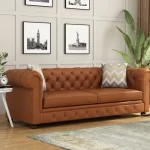Do you have problems with your submersible well pump?
At AW-Pump, & More, we have seen many homeowners throughout Massachusetts and surrounding areas who may not have known the value of good maintenance until problems become serious.
Costs are associated with that. Maintaining your well regularly, identifying problems early, and correcting them as soon as possible will help you protect its performance. Record all well installations, repairs, pumpings, and water tests.
We use FDA-compliant engineered plastics and 300 Series Stainless Steel in our FloWise® 4′′ S Submersible Pumps. Each component is manufactured to maximize performance, reliability, and durability.
Pumps for wells that are submersible
Your well water is delivered to your tap by a submersible well pump. Shallow well jet pumps do not have working parts submerged in water, so they are used in shallow wells less than 25 feet deep. Alternatively, deep well jet pumps can be used in wells up to 75 feet deep and have their ejectors installed inside the well. Wells are equipped with submersible pumps. An electric cable is attached to a small motor, called a driver, that is installed in the well shaft below the pump. From the pump to the home, piping is installed along the shaft. It is possible to set submersible well pumps hundreds of feet under water in a well, unlike their shallow-end counterparts. Water is pumped out of the well when a motor, consisting of several impellers and diffusers, spins on a standard shaft (called stages).
Pumps that use jets
There is a jet on or inside the Shallow Well Jet Pump. Water can only be lifted 25 feet by these pumps. When the jet pump is primed, water is forced down the pressure pipe and into the jet, where it passes through a nozzle and into the venturi tube, where it creates a vacuum that sends more water up to be captured.
Pumps for deep wells
Deep wells have jets (ejectors) in them. There are two types of jets. A two-pipe system and a single-pipe system. Two pipes are lowered into the well to the existing water level with a jet attached at the end. Using only one pipe, the single pipe jet is hung in the well. As the second pipe, the jet is sealed to the casing with two leathers.
Sewer pumps are installed by AW-Pump.
There are several types of sewage pumps, including Liberty Grinder Pumps. Solids are chopped into smaller pieces by a chopping mechanism, creating a slurry that can easily pass through pipes. You can easily set up and maintain our grinder pumps because they are made to the highest industry standards.
Standard 115V or 230V 20A circuits are supported.
These features include:
The construction is heavy cast iron
A single-phase 115V or 230V power supply is required
Patented V-Slice® cutter
• Solids such as feminine products, rags, towels, and wipes that can jam a solid handling pump can be shredded
The cutter and plate are made of stainless steel that has been hardened
Motors with oil-filled thermal protection
• A PRG-Series grinder can be used to replace a LE40 or LE50-series solids handling pump in 2′′ discharge systems.
The vertical switch model is available in 115V only.
The grinder pump
This grinder system with alarm includes a 24-inch and 30-inch diameter fiberglass basin with anti-float collar and a two-horsepower Omnivore® grinder pump with a 1-1/4″ discharge.
Experts in sump pumps
Both pedestal sump pumps and submersible sump pumps by Zoeller are installed and serviced by AW-Pump. A pedestal sump pump has the motor mounted above the sump, making it easier to service and maintain. Even though this type of sump pump is more accessible for service, it is more conspicuous and can get in the way, especially when used in a finished basement. Submersible sump pumps are the second type. In order to prevent short circuits, submersible sump pumps are completely submerged inside the sump. Due to the fact that this type of pump sits within the sump, servicing and maintaining it may require additional effort. In finished basements, they are often more effective and easier to hide.






